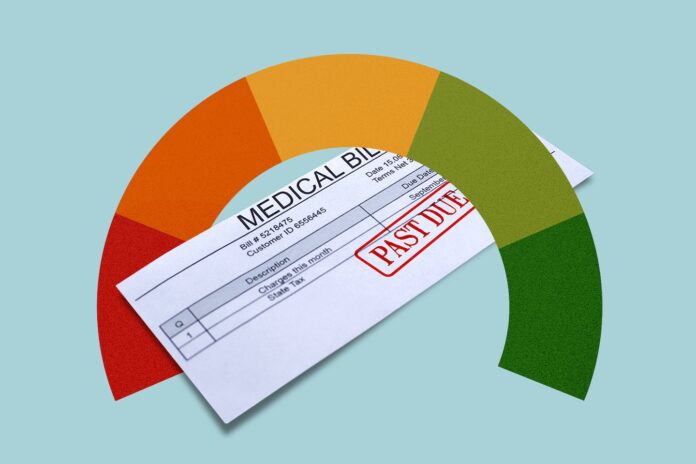Well, well, well, look who’s back at it again with their rice counting loans! Is it just me or is the cost of healthcare in the United States astronomically high? I mean, who wants to willingly take on debt for medical expenses when we’re still paying off our college loans! It’s not like we’re choosing to don a mortgage, where we have the mental and financial capacity to deal with it.
Imagine you break your leg while playing sports, we can bet that you’re not going to ask the physician how much it will cost before getting it fixed. You’ll beg them to fix it no matter the cost. These medical billing practices are like a joke that’s not funny. People’s wallets are getting cropped out, and many are headed towards bankruptcy. A survey conducted by the American Journal of Public Health of bankruptcy filers found that the majority said medical expenses contributed to their seeking relief. Ya think?
Now, to alleviate some problems, the three big fishes in the credit bureau market—Equifax, Experian, and TransUnion—announced on Tuesday that medical collections with balances of $500 or less would no longer show up on consumer credit reports. This is a huge deal, peeps! Millions of individuals—especially young people and those with lower income—depend on their credit scores to obtain affordable loans or rent an apartment. Plus, we all know that medical debt is not a choice most people make voluntarily.
The Bureau of Biden-Harris Congress announced plans previously to reform medical debt, which included directing the Department of Health and Human Services to look into providers’ billing practices and helping veterans waive their medical debt. The point of credit scoring is to predict who is likely to default on their debts. In a report last year, the Consumer Financial Protection Bureau questioned whether this type of debt should be reported to the credit bureaus and thus factored into credit scores.
Medical expenses cost way too much. Even if you are the most financially conscious person, you can still end up with a massive bill. Prices vary between different providers, making it even harder to come up with accurate pricing. Meanwhile, people are avoiding medical care for fear of the financial impact. This removal of $500 medical collections balances will reduce the weight on people’s shoulders.
You’d think it’s not that big of a deal, but it is. It’s not just one bill! It’s always multiple bills from different healthcare providers. According to Consumer Financial Protection Bureau, as of Q2 2021, $88 billion of outstanding medical bills sits in collections—affecting 1 in 5 Americans. Disturbing, isn’t it?
The most common collection tradeline reported on consumer credit records as of Q2 2021 was medical bills. It constituted 68.9% of accounts reported by debt collection companies collecting based on percentages they collect.
Medical debt is hard on people with low incomes, veterans, older adults, and minorities. A 2022 report from the National Consumer Law Center states that Black people suffer the most debt due to racial discrepancies in health and wealth.
Even if you have great health insurance, you can still find yourself in medical debt. Last year, credit bureaus removed all medical collection debt paid by the consumer in full. Additionally, the time period before unpaid medical collection debt appears on a consumer’s credit report increased from six months to a year. This offers consumers more time to address their medical debt before showing up on their credit reports.
We still need to decide whether all medical debt should be removed from credit reports. Apparently, around half of all people who have medical collections in their credit reports will still have medical items on their credit reports. The gravest issue is for those who live in the south and western parts of the country, as well as those living in low-income neighborhoods. They aren’t likely to benefit from this change and may continue to have medical items reported on their credit reports.
Newer credit score models tend to omit medical debt. When such data is removed, people’s scores can jump by as much as 25 points.
Here’s an interesting fact, someone once filed a complaint with Consumer Financial Protection Bureau regarding an emergency room visit asking for an itemized invoice. The response? That was the flat rate the hospital charges the insurance company for a five-minute doctor visit for their daughter.
Rolling eyes emoji, am I right?

